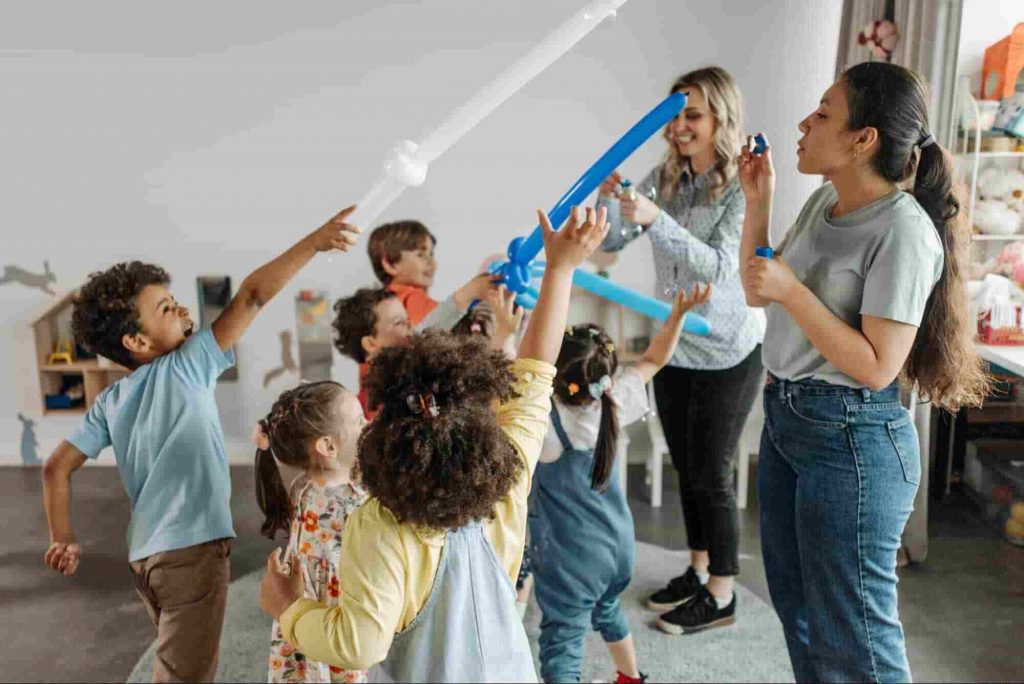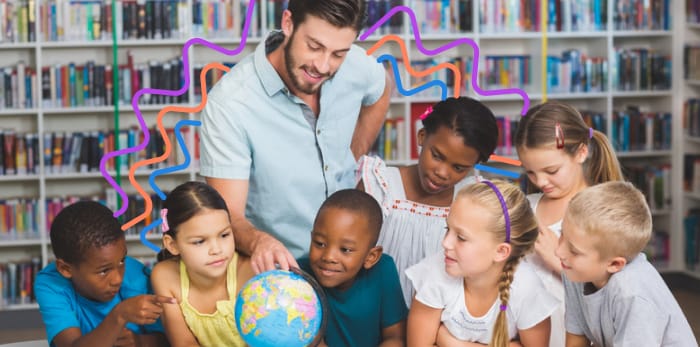The concept of culturally responsive teaching (CRT) in classrooms is gaining momentum these days. What is the concept, why is it important and how can we implement it effectively? Let us look into the topic in detail.
Math & ELA | PreK To Grade 5
Kids see fun.
You see real learning outcomes.
Watch your kids fall in love with math & reading through our scientifically designed curriculum.
Parents, try for free Teachers, use for free
What is Culturally Responsive Teaching?
Simply put, Culturally Responsive Teaching (CRT) is a research-based approach to teaching, which connects students’ cultures, languages, and life experiences with their learning in schools.
Who Introduced the Concept?
Gloria Ladson-Billingsan, an American pedagogical theorist and teacher educator, introduced the concept at the beginning of this century with an aim to explore the academic potential of students in a better way by integrating their cultural references in the classroom. Since then many researchers, including Geneva Gay and Sonia Nieto, have further developed the concept.
Why is Culturally Responsive Teaching Important?
While teaching in a classroom, you must have noticed that one student answers a question the way he/she does, while the other does not feel comfortable looking into your eyes while answering the same.
This is because students who come to the classroom have diverse cultures, languages, and learning abilities. They need individual attention to shape their minds.
Also read: The complete guide on differentiated instruction to boost kids’ learning.

However, there had been a growing feeling that the traditional system of schooling didn’t consider the cultural backgrounds of students thoughtfully, and they suffered from issues like language barriers, systemic discrimination, and lack of representation.
Related Reading: Best Tips for Creating a Healthy Student-Centered Learning Environment
CRT helps bridge these gaps by engaging students from underrepresented cultures in the learning process in ways that are meaningful and relevant to them.
An effective learning process is one in which you are fully involved in what you are doing. To make learning effective, SplashLearn’s games are well-designed and have well-implemented learning tasks with timely rewards.
How Does Culturally Responsive Teaching Benefit Stakeholders?
1. With the help of CRT, teachers can identify the strengths and weaknesses of students and develop their own mechanisms to engage with them effectively. Since the concept is inclusive in nature, it works better for talented but underprivileged students.
2. It helps teachers to meet the specific needs of students in a better way.
3. Since CRT focuses on inclusive curriculums, it helps teachers and students understand different perspectives, appreciate each other’s strengths, and build empathy.
It also helps teachers to introspect how their own identity and experiences impact their attitudes and teaching practices.

4. It helps in strengthening a sense of identity among students and makes them feel valued and empowered. They are also likely to develop the trust needed for building a relationship with a teacher.
5. The concept also supports social-emotional learning (SEL). Teachers can pair SEL with CRT to help students understand contexts both inside and outside the school. It also helps in developing critical thinking among students.
6. There are certain CRT practices that teachers can follow for their improvement, such as identifying students’ assets, creating a welcoming classroom environment, developing authentic and caring relationships, examining the curriculum to increase relevance, and exploring resources to deepen their own understanding.
How to Apply Culturally Responsive Teaching in the Classroom?
The first step in being culturally responsive is to assess yourself, as we all often develop biases in our lives.
Such biases, even if we do not want to, impact how we relate to students and their parents. You also have to be aware of the socio-political context schools operate in and, if required, dare to go against the status quo.
Now that you have assessed yourself, there is a need to assess the curriculum as well. What books are students reading? Do they have a voice in what they read? How do they interact with each other?
And finally, there is a need to plan your lessons keeping in mind the diversity of students. Don’t forget to add fun to your teaching styles, as it is the key element to engage with the students.
Also read: Find out how positive reinforcement can help kids learn better
5 Strategies for Educators
It has been observed that no single teaching approach effectively engages all students in the classroom. Therefore, there is a need to build a strategy to consistently deliver culturally responsive lessons to attract students coming from distinct backgrounds.
There are certain things you can do to evoke a response from students and increase their understanding.
You can encourage them to share their thoughts to understand their learning needs and styles. Then you can integrate different study practices and give instructions that involve them in the studies.
Here are some points you can follow to achieve the same:
1. Use prior knowledge of students to involve them in studies
Students enter the classroom with diverse experiences. Teachers should encourage them to draw on their prior knowledge to contribute to their studies.
2. Give context for better learning
When you are teaching, give the context of the matter. For example, if you’re teaching a chapter in history class, tell students why it matters to them now.

3. Relate with the cultural backgrounds of students
Since students come from different backgrounds, encourage students who don’t have a voice. For this, create an atmosphere for those in the minority to feel like they are an expert.
4. Relook your classroom setup
Take stock of the inventory of books in your library. Make sure that the library includes books covering diverse fields
5. Work on building relationships with students
You also need to work on building relationships with your students so that they feel respected and valued.
In a nutshell
It has been seen that CRT helps bridge the gap between teachers and students. It not only improves the success rate of students but also fosters positive relationships between parents and teachers, hence improving the overall education system.
Frequently Asked Questions (FAQs)
Why is it important to address student diversity in a classroom?
Students in a classroom come from different backgrounds. Therefore, they have different cultures, languages, and learning abilities. A teacher’s aim should be that all students in the classroom achieve at least minimum standards. It can be done by considering the diversity among students and creating an atmosphere in which their differences are supported and celebrated to provide them with the best opportunity to learn.
What is culturally responsive instruction?
It is how teachers respond to the cultural diversity of students while giving instructions in the classroom.
How can teachers be more culturally responsive?
Teachers can be culturally more responsive by removing their biases, which, intentionally or unintentionally, become a part of their personality in their life journey. Besides, teachers need to learn about their own culture and the culture of their students. These traits help a teacher in handling diversity in a classroom.
Why is there so much emphasis on reducing the gap among groups of students?
There was a growing feeling in society that the traditional schooling system was not addressing the needs of students who did not fit into the system of standards. This shifted the focus to the need for a more inclusive system of education in which the interests of diverse groups of students could be addressed. Culturally responsive teaching is part of that evolving system.
























